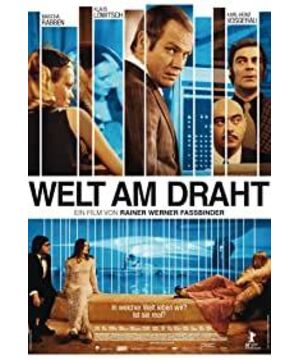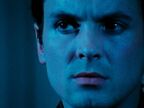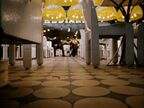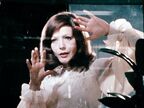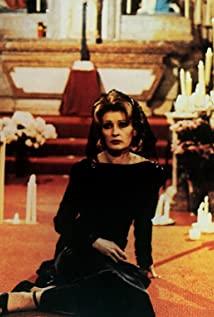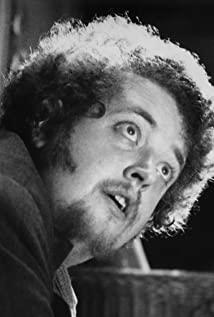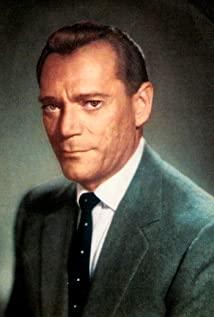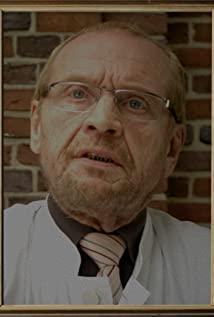1. When a director of an art film shoots a genre film, what he does is to use this genre to practice his film aesthetics, and this kind of film aesthetic practice will simultaneously become a challenge and challenge to this genre. Expansion has also become a counter-claim to film art by relying on the conventions and conventions accumulated in commercial film genres to challenge the originality of art required by film art.
2. In this film, "triple imitation" and "triple world" are used to successfully structure the theme of control and control, and about self-righteous control but in fact control. But in spite of this, Fassbender’s characteristic is that he is aware of all this, and the resistance has not been given up or denied.
Reiner Werner Fassbender is a famous representative of German new films, and was also known as the prodigy of German new films at the time. "Between the World" is a very special one in the series of Fassbinder's works. It is one of the few TV movies he has shot in his life, and it is also the only one in the series of Fassbinder's works. Science fiction type works.
Just as I chose his "Flying to Space" when I was talking about Tarkovsky, one of the reasons for choosing "Between the World" is to explain to everyone that there has never been a difference between commercial films and art films. There is no natural divide. When an art film director shoots a genre film, what he does is to use this genre to practice his film aesthetics, and this film aesthetic practice will simultaneously become a challenge and expansion to this genre. At the same time, it has also become a counter-application to film art with the accumulated conventions and regulations of commercial film genres, challenging the originality of art required by film art. If you haven't watched this movie at all, you won't be able to appreciate the extreme cutting-edge and avant-garde achievements of this movie in its era.
In this film, all the themes, all the pursuits of Fassbender, the radicalness of his film aesthetics and his personal style have a complete and unreserved expression. The film uses genre movies to show the characteristics of the characters through the story, and through the characters to delve into and deal with the social and philosophical issues that Fassbender is deeply obsessed with.
Fassbender is one of my most beloved directors. In 1982, 37-year-old Fassbender left us. That year was also my first year in filming. The death of Fassbender and his legend, which was once again extolled throughout the world because of his death, formed a very deep and very special mark in my personal life.
Together with Wenders, Schrondorf and Herzog, Fassbinder shocked the world with their artistic achievements, marking the occurrence of a new revolution in film aesthetics on the main stage of Europe. And this revolution in film aesthetics is at the same time a strong inquiry, criticism and reflection on Germany, German society and German culture, the initiator of World War II and the birthplace of fascism.
In this community, Fassbender is a very prominent and radical one. His famous saying is "You don't expect to be able to truly reflect on and discuss fascism under the German regime, because they refuse to recognize that fascism is capitalist." Inevitable logical extension".
The legend of Fassbender is that he was a bad boy from the beginning. Most of the directors are bad boys. Martin Scorsese, the director of "Taxi Driver", is a rare exception. He is always a top student; Yang Dechang is another exception. He eventually became a top student. Most film directors have entered art and film art from some unhealthy teenagers with anti-social characteristics in a certain sense.
Although Fassbender has a good family background, he is still a young man who cannot receive school education and social norms. His boyhood was spent in a brilliant career as a child star, wandering, roaming, and running away from home. He didn't enter the drama school until he was close to adulthood. After graduation, he immediately devoted himself to the creation of stage plays. He made his stage debut in 1967 and his film debut in 1968. His film debut "Love is Colder than Death" is even more famous.
The titles of Fassbinder’s two films "Love is Crueler than Death" and "Fear Eats the Soul" have almost become a kind of commentary on Fassbinder's film sequence, a kind of explanation, and have also become always entangled with him. One of the movie themes that he has grasped and studied deeply, and such a theme also appears in "The World Between Days and Nights".
Through "Love is Crueler than Death", Fassbinder became famous overnight and became an instant hit. This film began to attract widespread attention in Germany and around the world. Fassbinder, who was in his early twenties, soon became the youngest. The title of the most promising and talented director. From here, in just 14 years, Fassbender produced 41 films. He was only 37 years old when he left. At that time, on the front pages of all newspapers and magazines in the world, people recorded the moment of his death. It is said that when people found him, the cigar between his lips had not been extinguished, and under his feet was a broken champagne glass. He died of an overdose.
Imagine making 41 films in 14 years. At what rate is he burning himself, and he is a famous addict of all kinds, and he is also a "notorious" bisexual. By. It is said that he was shooting at a rate of four consecutive days of work, then a break of 24 to 48 hours, and then four consecutive days of work. The shooting cycle of many of his award-winning films is only nine or more than ten days. The intensity of this work is conceivable.
Fassbender’s effective life time may exceed the entire working hours of many people’s lives. He himself is burning his life like the characters in his works, fighting against all systems, and at the same time using a high-density, The original expression tried to share his issues, his anger, his thinking, and his rejection with everyone.
It is the themes such as "love is colder than death" and "fear swallows the soul" that seem to lead us directly to the choice of a science fiction theme such as "A Day in the World". In the 1970s, the imaginative reality dealt with in the film, the social and philosophical thinking that the film tried to touch and deal with were extremely novel and extremely unfamiliar.
This film is adapted from a sci-fi literary work "Triple Imitation", the name of the original work contains the main plot setting of the story. Many years later, a Hollywood film "The Thirteenth Floor", the English name "The Thirteenth Floor", was an adaptation of the same novel. When such a literary work full of whimsical ideas enters the routine of Hollywood production, it is presented very differently from a director who asks and ponders philosophical or metaphysical propositions in an art film master.
When watching a genre film made by a European film artist, don’t expect to see everything you would normally see in this genre. For example, very cool futuristic shapes, or the use of extremely wonderful special effects, all of which are not in Fassbinder's films.
On the contrary, what you see is an ordinary office space. There are bureaucratic scientists in the office space. When scientists face and fall into reality and fiction, free life and controlled life, power and freedom, imprisonment and When they escaped from the theme, they were mentally distressed, and the spiritual journey they experienced was shown in this sci-fi movie, not the visual stimulation and visual experience in "Thirteenth Floor" or "Alternative Dimensional Hacker". Provide satisfaction. All the stories will have a story left by the directors in Hollywood, such as love, such as happy ending, a happy ending, I call it "the icing cookie", but for the deepest "love is colder than death" "For Fassbinder, who knows that "fear swallows the soul", this is not something you can expect and get.
Today, it’s easy for us to see the avant-garde of this movie. In this movie, the phone booth is the first time to enter and exit the world at different levels. We will not see such a shape and imagination until "The Matrix". Systematic use.
In the words of Zizek, a very fashionable theorist in recent years, when we deal with parallel worlds, when we deal with different dimensions, perhaps the biggest difficulty is where the exit is and how do we enter and exit the world at different levels. In "A Day in the World", Fassbender used a telephone booth as such a space for the first time, and for the first time we visually saw such an original image where the mist rose and the image disappeared. design. At the same time, we will recognize in this film many of the imagination and styles of science fiction movies that only appeared on the mainstream vision and on the mainstream screen many years later, which once again strongly confirms the originality and style of this film. The genius of Fassbender.
"Between the World" uses the imagination of the artificial world and the hierarchical world with incredible imagination at the time. This is a unique motif created by science fiction narrative and science fiction literature from the very beginning. From a philosophical or suspenseful puzzle, maybe one day we will ask ourselves how can I conclude that the world in which I live is real. This is a kind of confusion of Zhuang Sheng's dream butterfly: How can I conclude that it is not the butterfly who has become me?
The theme itself is not so peculiar. The original work of the novel "Triple Imitation" and the TV movie "The World Between Days and Nights" expresses the world of "middle level", and one day suddenly discovers the autonomous space that oneself is for. , The circuit world that I controlled as a test project was originally controlled by a bigger world, a higher world.
But Fassbender is not only faithfully adapting a sci-fi theme about the illusion of "If the world I live in is only made by others" and "If the world I live in is only controlled by others", he is also in such a theme. Joined as an avant-garde, radical social critics always pay attention to themes, about power and control, about resistance and freedom.
What makes Fassbinder interesting or as a very important imprint of his time is that he cares about freedom, but freedom is not all of him. He also cares about social justice and social equality. What he cares about is if we can create a The world, then should we create a more ideal, more complete, and fair world instead of copying the power relations of the real world. When we can escape, should we only consider our own escape and self-rescue, or should we pay more attention to resisting the power above our heads while also resisting the violence and oppression around us.
So he gave his protagonist a heroic choice, which is completely different from the choice of the Hollywood version of "Alternative Dimensional Hacker". In the Hollywood movie version, the protagonist drove his car bravely but also desperately to the end of the world along the highway until he hit a circuit board space, reached the end of the world, confirming that his world is only It is an artificial creation, just a fiction.
In Fassbinder’s choice, the protagonist finally jumped into the car to give a public speech, shouting resistance, shouting the end of oppression and injustice. Fassbender gave the film more social, psychological and philosophical levels.
It is this characteristic that allows us to imagine why in the same period, not only Fassbender, but also the most famous French New Wave Musketeer, the most famous warrior Godard, and the most accomplished international director of Soviet films, Talco They all consciously chose science fiction as a medium to express their deeper or overall thinking about philosophy and society.
The photographer uses mirrors and the unique picture frames formed by mirroring as the most unique, richest and most variable modeling language and modeling methods in the film to express meaning, structure the environment, and tell the story. The photographer of this film has a very famous description of Fassbinder. He said that I will always find him proactively and tell him that I have this kind of creativity now. I decided to use this method, Fassbinder. Will listen, and then Fassbinder will deny it and propose a better idea.
Fassbinder chose a cinematographer who is good at using picture frames, mirrors, and modeling language. At the same time, Fassbinder himself is also good at using such artistic language and artistic methods. Every time In his films, similar modeling language and visual methods will be used very differently and full of originality.
In this movie, a group of scientists control their lower world, their experimental projects, and their circuit world. At the beginning of the movie, guests came to this scientific space, came to this research institute, and then people knew about them. An important project is underway, which is to create a miniature world, and use this miniature world to predict and predict the real world. When people asked the people called identity units in the circuit world they made, whether they were real or fake, the protagonist replied that for themselves they think they are real people, for us , They are nothing but a mechanical effect. He said that they think they live like human beings, but for us they are like entertaining us on TV.
The plot continues to advance. Scientists find that what they are in is just an intermediate world. They are only the second part of the "triple imitation". Above them is a world that controls their world, and there is a power that controls their power. At that time, all their previous descriptions of the bottom world can be applied to themselves, they just think that they are free, they just think that they are independent subjects, and in fact they only designed something for the purpose they didn’t know. The existence of hallucinations is nothing more than.
When such an identification appeared, the director began to systematically and very consciously use the modeling method of the mirror, and at the same time constitute a scene in which the character and his mirror image were present in the same picture. He used this expression to directly express about These characters are just some shadows created by their upper world. Do they really have real bodies? This is a question in itself, but it is certain that they are some kind of shadows, even shadows of shadows.
A very important dramatic scene in the film. When the protagonist realizes that his female colleague is a special agent in the upper world, when he and her reveal all the truth, multiple mirror images appear in the film screen, one of which is a scene Among them, the triple mirror image is used accurately to express the "triple imitation".
My favorite scene is that the protagonist walks through the corridor, and the corridor is full of reflections formed by mirrors and glass doors and windows. So what you see is a double reflection in the painting and a double reflection in the painting, and every time the reflection is out of the painting, the real person is in the painting. The overlapping long shots between the shadow and the shadow, the image and the image show how the people in the middle layer are trapped. In a kind of extreme distress, they can't tell whether they are real or a shadow. For the bottom world, they are completely real, while for the top world, they may be completely phantoms.
A very stylized form of expression of Fassbinder. First of all, I saw a character on the screen of the movie, saw his performance, his actions, his behavior, and then the camera began to move, and then I realized what I saw just now. It is just a mirror image, the real body will only appear during the movement of the camera, and a phantom is shown as a real body. And in this movie, as the camera continues to move, the real body is once again shown as a phantom.
In this passage, the people at the middle level find that they are only the second imitation, but when it is the middle level, Fassbender began to very consciously use a variety of foregrounds to form occlusions for the characters. At the same time, these foregrounds constitute a double expression. The first expression is that the foreground, such as stairs, window bars, and grids, forms the obscuration and blocking of the characters. The movie clearly tells us that the protagonist is not a space that can control the picture. He cannot dominate his own existence and his own life. Another expression is that the movie constantly uses the foreground to form a picture frame in the picture frame, and frames the protagonist in the picture frame, forming another hint and reference to the image and mirroring, indicating that it is just a kind of mirror. The middle image is just an image constructed by people in a certain limited space.
The film has successfully used a grid similar to a protective net several times. When the camera starts to pull apart, from a very close range, a raster-like occlusion that is already out of focus slowly becomes a clear and recognizable one. The net of protection forms another proposition that the director focuses on in the film: the eternal contradictory relationship between freedom and imprisonment, power and control, resistance and freedom.
The discussion of freedom is the most concentrated theme in Fassbinder’s works, but Fassbender has never given the theme of freedom any romantic color. In the free exploration and free inquiry that are not romantic, he also put it in A bigger discussion about social freedom and not just individual freedom. This is a very prominent visual feature in the film, and also a thematic feature in the film. It is almost consistent in Fassbinder's film sequence.
Fassbender is very good at dealing with lies about the soul, on topics of deception and self-deception. For example, in "Maria Braun’s Marriage", he is very successful in dealing with multiple lies, multiple betrayals, and real The tragedy is that the traitor found that he was betrayed long before the betrayal, and the seller found that he was priced and sold by the other party long before the betrayal.
This is just like the use of "triple imitation" and "triple world" in the film to successfully structure the theme of control and control, about self-righteous control but in fact controlled. But in spite of this, Fassbender’s characteristic is that he is aware of all this, and the resistance has not been given up or denied.
Fassbinder is wild and legendary, but Fassbinder’s resistance and perseverance have never been cheap, so to this day he is still a legend in the 20th century, and I hope he is still legendary in the 21st century. Enlightenment.
dictionary:
1. Zizek
Slavoj Zizek (March 21, 1949), Slovenian writer and scholar, was born in Ljubljana, Slovenia. Senior researcher of society and philosophy at the University of Ljubljana, the most important heir to the Lacan tradition, long-term commitment to communication [Lacan]( https://baike.baidu.com/item/%E6%8B%89%E5%BA %B7 ) [Psychoanalysis Theory]( https://baike.baidu.com/item/%E7%B2%BE%E7%A5%9E%E5%88%86%E6%9E%90%E7%90% 86%E8%AE%BA ) and Marxist philosophy, will [psychoanalysis]( https://baike.baidu.com/item/%E7%B2%BE%E7%A5%9E%E5%88%86% E6%9E%90 ), [Subjectivity]( https://baike.baidu.com/item/%E4%B8%BB%E4%BD%93%E6%80%A7 ), [Ideology]( https ://baike.baidu.com/item/%E6%84%8F%E8%AF%86%E5%BD%A2%E6%80%81 ) and [popular culture]( https://baike.baidu. com/item/%E5%A4%A7%E4%BC%97%E6%96%87%E5%8C%96 ) melted in one furnace, formed a very unique academic thought and political position, which became the 1990s The most dazzling international [academic star] ( https://baike.baidu.com/item/%E5%AD%A6%E6%9C%AF%E6%98%8E%E6%98%9F) One, known by some scholars as [Hegel] ( https://baike.baidu.com/item/%E9%BB%91%E6%A0%BC%E5%B0%94 ) type thinker. The main works are "[Fragile Absolute] ( https://baike.baidu.com/item/%E6%98%93%E7%A2%8E%E7%9A%84%E7%BB%9D%E5% AF%B9 ) -Why is the Christian legacy worth fighting for? "The Great Shift of Pleasure-Six Opinions on Women and Causality", "Contingency, Hegemony, and Universality-Contemporary Dialogue on the Left", "The Sensitive Subject: The Absent Center of Political Ontology."
2. Mirror
The mirror image theory is developed by [Jacques Lacan]( https://baike.baidu.com/item/%E9%9B%85%E5%85%8B%C2%B7%E6%8B%89%E5%BA% B7 ) (Jacques Lacan, 1901-1981). Mirror image theory refers to the theory that all situational consciousness that confuses reality and imagination is called mirror image experience. Lacan's mirror phase starts from the baby looking in the mirror, and calls all scenes that confuse reality and imagination as a mirror experience.
View more about World on a Wire reviews


